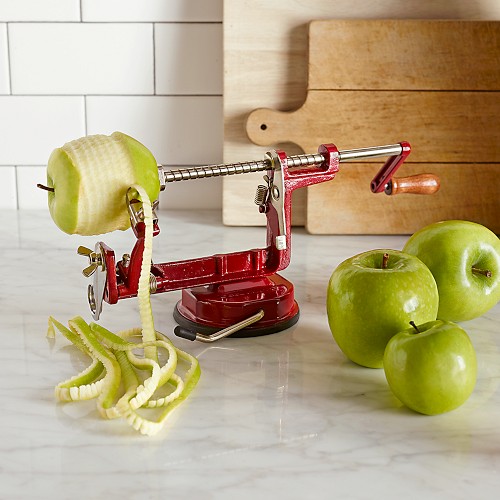
Sweet, thin-skinned apples are best for eating raw, as a snack out of hand or paired with aged cheese, while tart apples are ideal for making pies, cakes, pastries or applesauce.
Most apples are harvested from autumn to early winter. The most recognizable varieties for eating fresh include Red Delicious, sweet Golden Delicious, tart and green Granny Smith, red- and yellow-streaked Gala and the red-marbled McIntosh. Bakers seek out varieties such as Jonathan, Cortland, Pippin, Winesap, Gravenstein and Braeburn for their sturdy texture that balance sweetness with pronounced tartness and hints of spiciness.
Selecting
Look for unbroken skin with good color and no soft brown spots. Whenever possible, buy newly harvested local apples.
Storing
Because apples continue to ripen at room temperature, refrigerate them in the cold back part of the refrigerator for 1 week or longer. If you plan to eat them soon after purchase, they can be held at room temperature for a few days.
Preparing
A small, sharp knife is all you need for peeling and slicing apples, although a vegetable peeler may be easier for the novice cook to use. Specially designed apple corers are available. Exposed apple flesh quickly discolors unless it is rubbed with lemon or other citrus juice. Since the skin of the apple contains so many nutrients, it is a good idea to leave it on when possible.
Adapted from Williams-Sonoma Kitchen Companion (Time-Life Books, 2000).
Related Recipes:
- Apple Cider Cocktail →
- Freshly Pressed Mulled Apple Cider →
- Cream of Butternut Squash and Apple Soup →
- Prosciutto Panini with Apple and Gruyère →
- Apple-Pear Turnovers →
- Apple-Cheddar Pie →
- Apple and Fennel Slaw →
- Apple and Sausage Patties →
- Apple Galette →
- Pork Shoulder with Sauerkraut and Apples →
- Brûléed Oatmeal with Baked Apples →
- Spiced Apple Coffee Cake →
- Cinnamon Waffles with Caramelized Apples →
Related Tips:
Recommended Products
- $89.95









